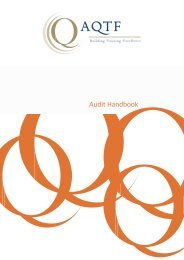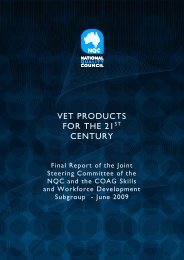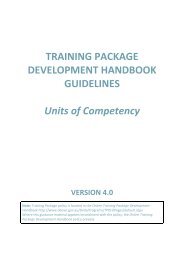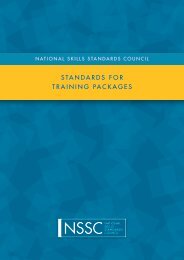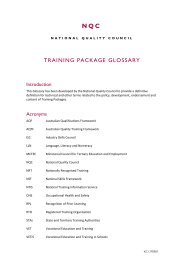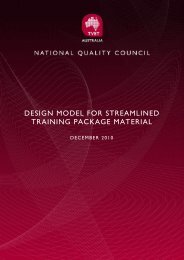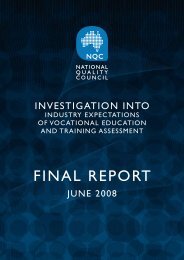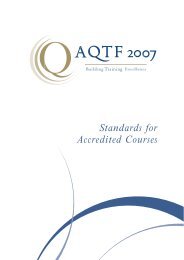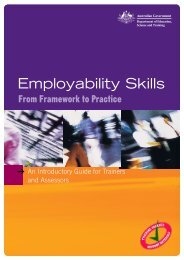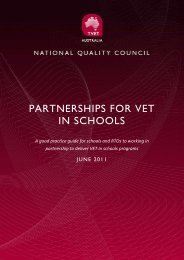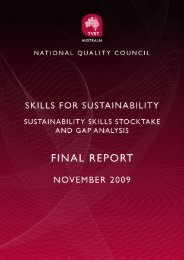Training package development handbook guidelines
Training package development handbook guidelines
Training package development handbook guidelines
You also want an ePaper? Increase the reach of your titles
YUMPU automatically turns print PDFs into web optimized ePapers that Google loves.
• Customise <strong>package</strong>d software applications for clients<br />
• Provide advice to clients<br />
• Use advanced features of computer applications<br />
• Create user and technical documentation<br />
Electives:<br />
Choose any six units, up to two of which can be drawn from any other nationally endorsed <strong>Training</strong><br />
Package (please refer to the section on customisation of qualifications which provides advice on the<br />
appropriate selection of units from other <strong>Training</strong> Packages).<br />
• Maintain equipment and software in working order<br />
• Connect internal hardware components<br />
• Install network hardware to a network<br />
• Create code for applications<br />
• Install and optimise system software<br />
• Run standard diagnostic tests<br />
• Migrate to new technology<br />
• Operate system software<br />
• Install and manage network protocols<br />
• Relate to clients on a business level<br />
• Provide basic system administration<br />
• Install software to networked computers<br />
• Provide network systems administration<br />
• Provide one‐to‐one instruction<br />
• Administer network peripherals<br />
• Create web pages with multimedia<br />
• Apply skills in project integration<br />
Note: Advice in the contextualisation section of <strong>Training</strong> Packages should clearly explain the<br />
boundaries for incorporating units from other endorsed <strong>Training</strong> Packages. This would typically<br />
cover the appropriate alignment of source qualifications and may specify which industry <strong>Training</strong><br />
Packages would be relevant.<br />
11.3 Core and specialisation model<br />
This variation on the core and electives model is another popular approach. Again there is a core of<br />
essential units but under this model a choice is made from defined groups of units – specialisations –<br />
rather than a choice between individual units. There may also be elective choices within the<br />
specialisation groups that the packaging rules should clearly explain.<br />
This is a useful model where particular specialisations are widely recognised in an industry in<br />
addition to a shared set of skills covered by the core units. The approach also avoids inappropriate<br />
elective choices being made from a large group of units that would not lead to any particular<br />
recognised specialisation.<br />
GuidelinesQualFrameworks_V3_June 2010 V3 June 2010 Page 16 of 28



